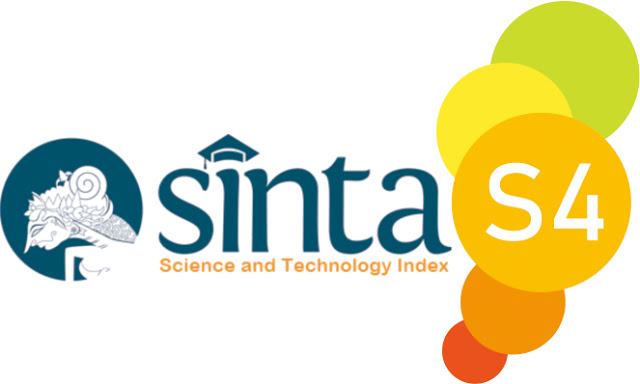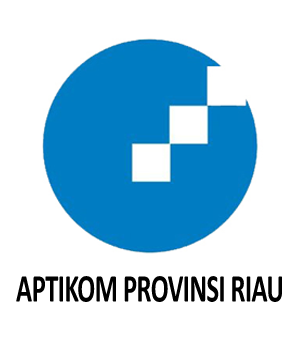Acceptance Analysis and Application Success Bicarakan.id using Utaut and DeLone & McLean
Abstract
The development of digital-based mental wellbeing administrations gives viable and adaptable arrangements for the community, particularly the millennial era, in getting to mental administrations. One of the stages that give online counseling administrations in Indonesia is the application Bicarakan.id, which demonstrates a decently tall selection rate. Be that as it may, based on perceptions, it was found that different complaints from clients on a number of stages, such as less than ideal application execution and moderate reaction from benefit suppliers, hence preventing get to to the specified administrations. This consider points to analyze the components that influence the acknowledgment and effective utilize of the application Bicarakan.id by combining two approaches,namely the Unified Theory of Acceptance and Use of Technology (UTAUT) and DeLone & McLean model. The examination prepare was conducted utilizing Partial Least Square Structural Equation Model (PLS-SEM) through SmartPLS 4 computer program and included 403 respondents. The comes about appeared that the factors Information Quality, Service Quality, and Effort expectation desire have a positive and critical impact on User Satisfaction, which in turn too have a positive and critical impact on Continuance Intention. In the mean time, factors System Quality and Performance Expectancy desire don't have a critical impact on User Satisfaction, as prove by testing Path Coefficient based on the centrality criteria set.
Downloads
References
S. Harith, I. Backhaus, N. Mohbin, H. T. Ngo, and S. Khoo, “Effectiveness of digital mental health interventions for university students: an umbrella review,” PeerJ, vol. 10, p. e13111, Mar. 2022, doi: 10.7717/peerj.13111.
M. Rahmadiana et al., “Guided internet-based transdiagnostic intervention for Indonesian university students with symptoms of anxiety and depression: A pilot study protocol,” Internet Interv., vol. 15, pp. 2–34, Mar. 2019, doi: 10.1016/j.invent.201.11.002.
J. Kissi, B. Dai, C. S. Dogbe, J. Banahene, and O. Ernest, “Predictive factors of physicians’ satisfaction with telemedicine services acceptance,” Health Informatics J., vol. 26, no. 3, pp. 166–10, Sep. 2020, doi: 10.1177/14604521992162.
M. J. Rho, I. Y. Choi, and J. Lee, “Predictive factors of telemedicine service acceptance and behavioral intention of physicians,” Int. J. Med. Inf., vol. 3, no. , pp. 559–571, Aug. 2014, doi: 10.1016/j.ijmedinf.2014.05.005.
S. Jansen-Kosterink, M. Dekker-van Weering, and L. Van Velsen, “Patient acceptance of a telemedicine service for rehabilitation care: A focus group study,” Int. J. Med. Inf., vol. 125, pp. 22–29, May 2019, doi: 10.1016/j.ijmedinf.2019.01.011.
J. Shi, X. Yan, M. Wang, P. Lei, and G. Yu, “Factors Influencing the Acceptance of Pediatric Telemedicine Services in China: A Cross-Sectional Study,” Front. Pediatr., vol. 9, p. 74567, Oct. 2021, doi: 10.339/fped.2021.74567.
J. Tan, Ed., New Technologies for Advancing Healthcare and Clinical Practices: IGI Global, 2011. doi: 10.401/97-1-60960-70-7.
[] W. M. Tessema and N. Cavus, “Determining information system end-user satisfaction and continuance intension with a unified modeling approach,” Sci. Rep., vol. 14, no. 1, p. 62, Mar. 2024, doi: 10.103/s4159-024-5721-4.
F. Haikal, N. K. Tyas, X. D. Felcia, and D. Sundaram, “USER ACCEPTANCE ANALYSIS OF THE E-HEALTH INFORMATION SYSTEM USING UTAUT2 METHOD,” . Vol., no. 7, 2022.
W. H. Delone and E. R. McLean, “The DeLone and McLean Model of Information Systems Success: A Ten-Year Update,” J. Manag. Inf. Syst., vol. 19, no. 4, pp. 9–30, Apr. 2003, doi: 10.100/07421222.2003.1104574.
Venkatesh, Morris, Davis, and Davis, “User Acceptance of Information Technology: Toward a Unified View,” MIS Q., vol. 27, no. 3, p. 425, 2003, doi: 10.2307/30036540.
R. Nivell, “Di tengah stigma dan kelangkaan psikolog, aplikasi konseling kesehatan mental di Indonesia kebanjiran pengguna,” channelnewsasia. [Online]. Available: https://www.channelnewsasia.com/indonesia/sesi-konseling-psikologi-di-aplikasi-kesehatan-mental-di-indonesia-kebanjiran-pengguna-3799116#:~:text=Bicarakan.id%20juga%20memiliki%20kisah,melayani%20lebih%20dari%20150.000%20pengguna.
D. Y. Prasetyo, “PENERAPAN METODE UTAUT (UNIFIED THEORY OF ACCEPTANCE AND USE OF TECHNOLOGY) DALAM MEMAHAMI PENERIMAAN DAN PENGGUNAAN WEBSITE KKN LPPM UNISI,” vol. 6, 2017.
M. Indah and H. Agustin, “Penerapan Model Utaut (Unified Theory Of Acceptance And Use Of Technology) Untuk Memahami Niat Dan Perilaku Aktual Pengguna Go-Pay Di Kota Padang,” J. Eksplor. Akunt., vol. 1, no. 4, pp. 1949–1967, Dec. 2019, doi: 10.24036/jea.v1i4.1.
D. Blumenthal, “Information Technology Comes to Medicine,” N. Engl. J. Med., 2007.
. H. Harianja, N. W. Al-Hafiz, and J. Jasri, “Data Analysis of Informatics Engineering Students of Islamic University of Kuantan Singingi”, JTOS, vol. 6, no. 1, pp. 23 - 30, Jan. 2023.
. Siregar, M., and N. Al-Hafiz. "Design of Cloud Computer to Support Independent Information System Servers Universitas Islam Kuantan Singingi." Journal of Information System Research (JOSH) 3.2 (2022)
. Apri Denta, H. Nopriandi, and E. Erlinda, “Information System Design Realization and Performance Achievements of the Manpower Office of Kuantan Singingi District”, JTOS, vol. 7, no. 1, pp. 01 - 09, Nov. 2024.
. AP Putra, E. Erlinda, and M. Yusfahmi, “Sales System in the Endocell Mobile Phone Business Using the CRM (Customer Relationship Management) Method) in Kompe Berangin Village, Cerenti District”, JTOS, vol. 7, no. 1, pp. 10 - 21, Nov. 2024.
. Setiawan, F. Haswan, and J. Jasri, “Design of School Bell Scheduling Application Based on Arduino Uno on MTs Babussalam Simandolak”, JTOS, vol. 7, no. 1, pp. 22 - 30, Jul. 2024.
. Juniarti, A. Aprizal, and S. Chairani, “Information System for Analyzing Disease Trends in the Region Cerenti Health UPTD”, JTOS, vol. 7, no. 1, pp. 31 - 43, Jun. 2024.
. Restuadi, H. Nopriandi, and A. Aprizal, “ANALISIS QOS JARINGAN INTERNET FAKULTAS TEKNIK UNIVERSITAS ISLAM KUANTAN SINGINGI MENGGUNAKAN WIRESHARK 4.0.3”, JTOS, vol. 7, no. 1, pp. 44 - 54, Jun. 2024.
. J. Jasri and N. W. Al-hafiz, “Designing a mobile-based infaq application markazul quran wassunnah foundation (MQS)Kuantan Singingi”, J. Teknik Informatika CIT Medicom, vol. 15, no. 5, pp. 247–254, Nov. 2023.
. R. Nazli, A. Amrizal, H. Hendra, and S. Syukriadi, “Modeling User Interface Design E-Business Applications for Marketing Umkm Products in Payakumbuh City Using Pieces Framework”, JTOS, vol. 7, no. 2, pp. 55 - 66, Nov. 2024.
. Siti Saniah and Mhd. Furqan, “Classification Of Rice Plant Diseases Using K-Nearest Neighbor Algorithm Based On Hue Saturation Value Color Extraction And Gray Level Co-Occurrence Matrix Features”, JTOS, vol. 7, no. 2, pp. 212 - 223, Dec. 2024.
Copyright (c) 2025 Tegar Adi Wicaksono, Anita Wulansari, Rafika Rahmawati

This work is licensed under a Creative Commons Attribution-ShareAlike 4.0 International License.
This is an open-access article distributed under the terms of the Creative Commons Attribution-ShareAlike 4.0 International License which permits unrestricted use, distribution, and reproduction in any medium. Users are allowed to read, download, copy, distribute, search, or link to full-text articles in this journal without asking by giving appropriate credit, provide a link to the license, and indicate if changes were made. All of the remix, transform, or build upon the material must distribute the contributions under the same license as the original.















